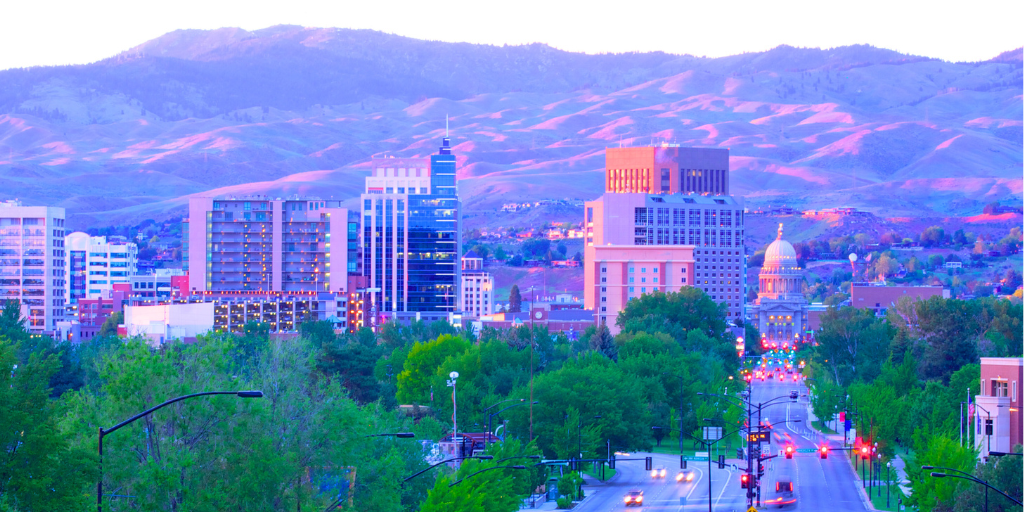
Kathryn Pasker Ineck contemplates her love-hate relationship with nature, and ponders the idea of "finding God in Nature."
Tree-Hater?
Twisting up and around, I could see past the wings on my white plastic car seat and up through the window at the blue sky. Trees taller than my four-year-old brain could comprehend played with the clouds. “Puttin on the Ritz” and Barry Manilow sang through the radio.
“Girls,” my parents announced to my sister and me from the front seat of our Buick, “we are going to move to the desert.”
I clearly remember the images of a sand-covered expanse with large saguaro cacti that filled my imagination and the relief that flowed through my little limbs: I was not going to die from an outrageously tall tree falling on me in the outskirts of Portland, Oregon.
Logical? Nope. But a real concern, nonetheless.
Mom and Dad moved us kids — two preschoolers and a newborn — to the temperate desert of southern Idaho. I was rather disappointed by the lack of saguaros — and blamed Looney Tunes for such false promises.
Idaho does not have a lot of succulents, but it does boast sandy soil, hot summer temperatures, and low precipitation levels. It also offers cool overnight temperatures, four changing seasons … and trees. Just not the kind that coastal Oregon has.

Tree-Lover?
I’ve been thinking a lot about trees lately, and have been regretting not taking my kids out into the forests for “nature walks” with science journals and colored pencils in tow so they could really study the flora and fauna in the foothills and mountains so close to our home. (I am forgetting, of course, that when I did take them on walks through our nature parks, the kids would shove their notebooks and pencils at me as they darted off to look at lily pads or turtles or geese.)
Walking around our suburban neighborhood in the cooler evenings with nearly-21-year-old Digit, I find myself pausing to feel the feathery needles of evergreens and prickly needles of pine trees. Studying the way new buds develop on the deciduous trees. Discovering that we do not, in fact have a cherry tree in our front lawn, but a plum tree (to the delight of my sister-in-law, and the wonderment of myself — it turns out that cherry trees do not have purple leaves. Who knew? Yesenia. Yesenia knew).
As a disclaimer, I am not someone who anyone would consider to be a “nature person.” I dislike dirt. Falling leaves feel messy to me. I call fall and spring the “mud seasons” because the kids track in so much debris. I didn’t study my beloved geology in college because I just knew I would be expected to dig in the dirt with the creepy-crawlies.

Given all of this, I surprised myself this morning when I took the interstate in to work: it’s maybe a longer route and I generally avoid it like the plague. But I found myself yearning to look at the mountains. Driving east on the interstate means that the mountains that hold our little Treasure Valley in place are directly in view and they are in all their early-summer glory: just the hint of green as the far-away grasses and cover the mountainsides and the dense collection of ponderosa pine trees coalesce into a shade that might even be considered green-adjacent.
Today, I realized why I am so enamored of the trees and the mountains. Even when I might still be a little afraid of them.
They just seem so impossibly big. And so impossibly beautiful.
I know that a lot of people say that they find God in the forests and in the mountains and in Nature-with-a-capital-N. They say they can pray just as easily in Nature as they can in a church … and I think they have a point.
God created all of the earth and everything in it. The mountains and the trees are stamped with His fingerprints. We see the wonder and the beauty and the awe of His creation and we can feel Him. See Him. Sense Him. Smell Him.

We, like Nature, are covered in His fingerprints.
We feel a sense of completeness communing with our fellow creations. It’s not Church. But is His. So, what’s the difference? What does Church offer us that Nature doesn’t?
Community.
Churches are a home for people — for sinners, not saints. It is a place for community bonds, for cooperation, for life. Like Nature, churches can be places for solitary contemplation, which is important. But unlike Nature, Church is a place for the Body of Christ to come together in fellowship, to partake of the Paschal mystery to be fed. To take that life-giving nourishment out into the world. The world of trees and mountains. Of skies and seas. Of cars and asphalt and busy-ness.

Exiting the interstate, the mountains are closer with the expanse of the east end of town spread out below…and blanketed in trees. Deciduous trees, dotted with conifers.
The kinds that don’t grow tall enough for my little-girl self to fear them.
Share your thoughts with the Catholic Mom community! You'll find the comment box below the author's bio and list of recommended articles.
Copyright 2024 Kathryn Pasker Ineck
Images: Canva
About the Author

Kathryn Pasker Ineck
Married for more than two decades to her best friend, and mom of four teens, Kathryn finds that life is never boring. She pursues the heart of God--led by His gentle Mother--and relies on the Divine Mercy Chaplet, a desire for chocolate, and an insatiable thirst for reading into the wee hours of the morning. She writes to maintain her sanity at Kathryn Pasker Ineck.


.png?width=1806&height=731&name=CatholicMom_hcfm_logo1_pos_871c_2728c%20(002).png)
Comments